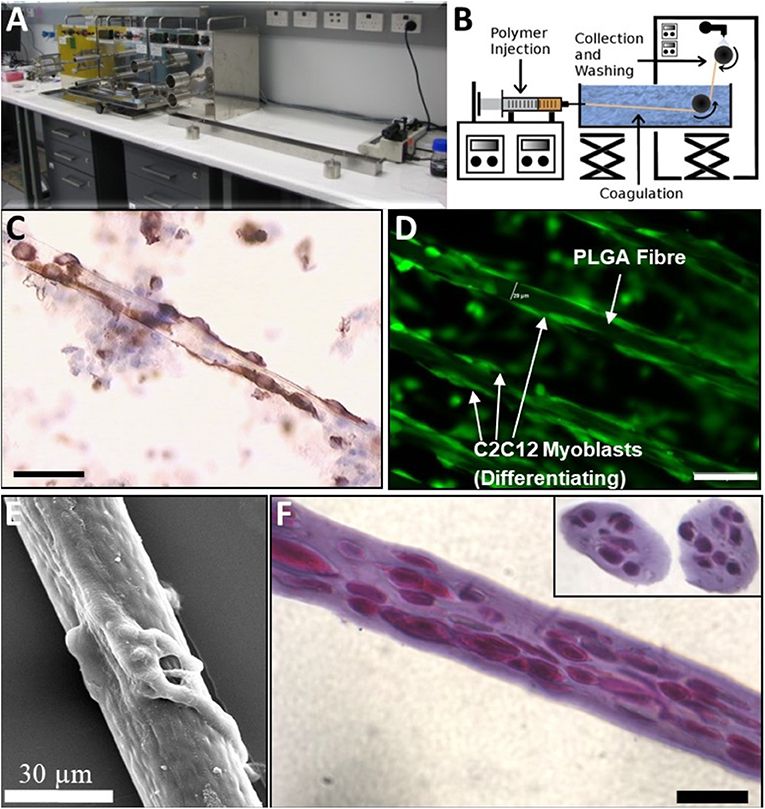News
3D printing bone tissue
Jun 28 2022
Researchers from the ARC Centre of Excellence for Materials Science (ACES) have contributed to a breakthrough in the development of new technologies to treat muscle loss, recently published in Frontier in Chemistry.

Source: Frontier in Chemistry
The paper addresses the needs of thousands of Australians suffering from diseases such as muscular dystrophy and muscle loss through trauma by engineering 3D regenerative skeletal muscle tissue constructs (skMTCs). The constructs are composed of biomaterials using hydrogels containing muscle precursor cells (MPCs) for repair.
Current treatments involving the transplantation of muscle cells have failed as they provide no means of localisation.
The research shows a 3D construct is required for this new repair technology to be effective. By creating and assembling fibres containing living muscle cells using as an established method of fabrication and biofabrication (wet-spinning), an innovative solution has been delivered.
The publication was led by ACES Research Fellow and now Associate Investigator Dr Anita Quigley, from the Royal Melbourne Institute of Technology, with correspondence by ACES Chief Investigators Prof Rob Kapsa (St Vincent’s Hospital Melbourne) and ACES Director Prof Gordon Wallace (University of Wollongong). Other authors involved included ACES Chief Investigators A/Prof Jeremy Crook (University of Wollongong) and Prof Simon Moulton (Swinburne University of Technology) along with ACES Associate Investigator Dr Javad Foroughi and ACES Senior Research Assistant Magdalena Kita (University of Wollongong) – as well as ACES alumni Prof Joselito Razal and Tharun Mysore (Deakin University) and Rhys Cornock (ANFF Materials node).
“After various studies, we have been able to show how this technology is highly effective in facilitating muscle regeneration and integration,” said ACES Director Prof Gordon Wallace.
“This progress has been enabled by the assembly of individual skills from disparate disciplines into a cohesive research team.
“With the success of this research so far, more detailed larger animal studies are set to follow over a longer period of time for it to then be considered for actual humans.”
Read the full paper here.













